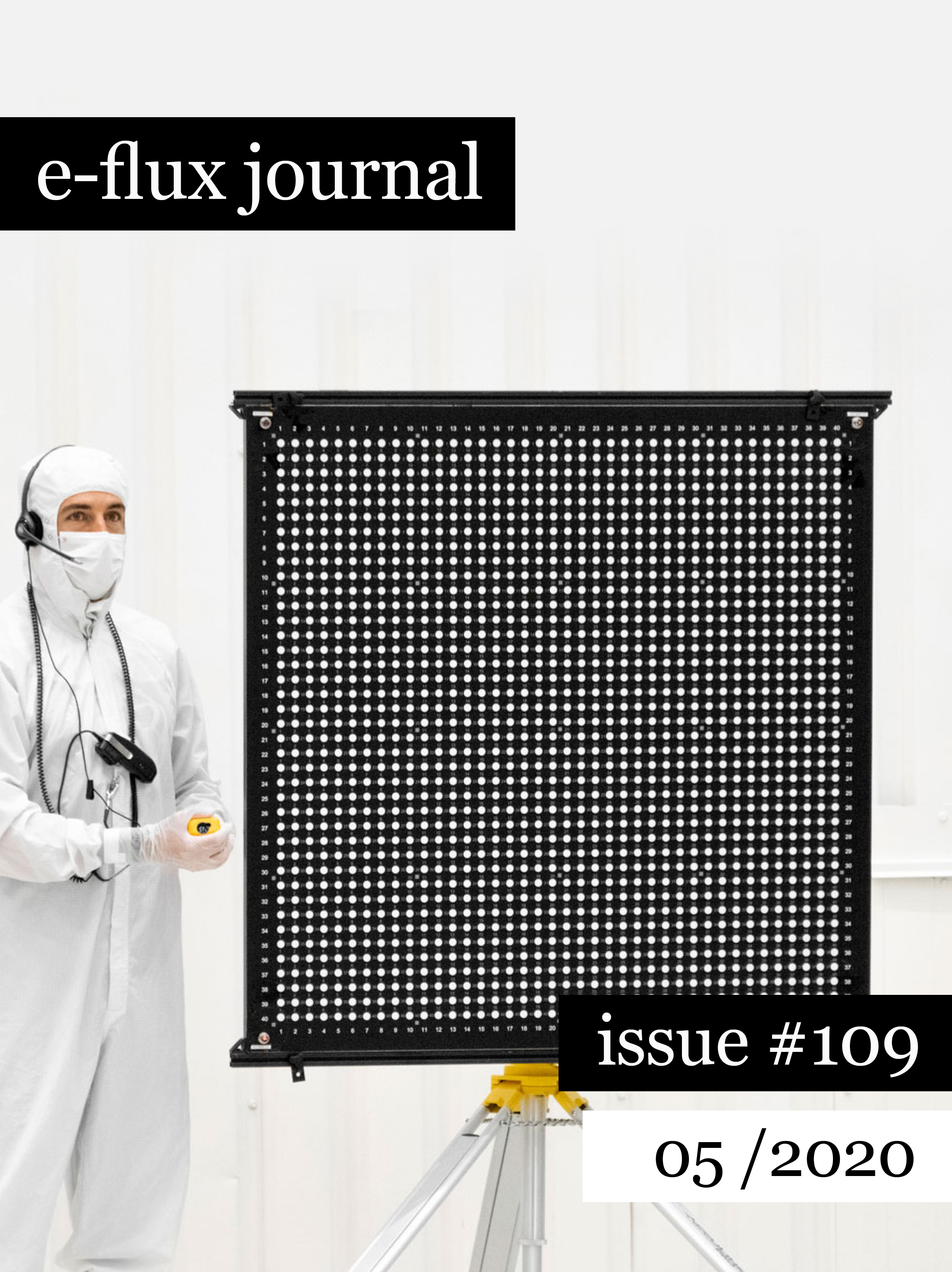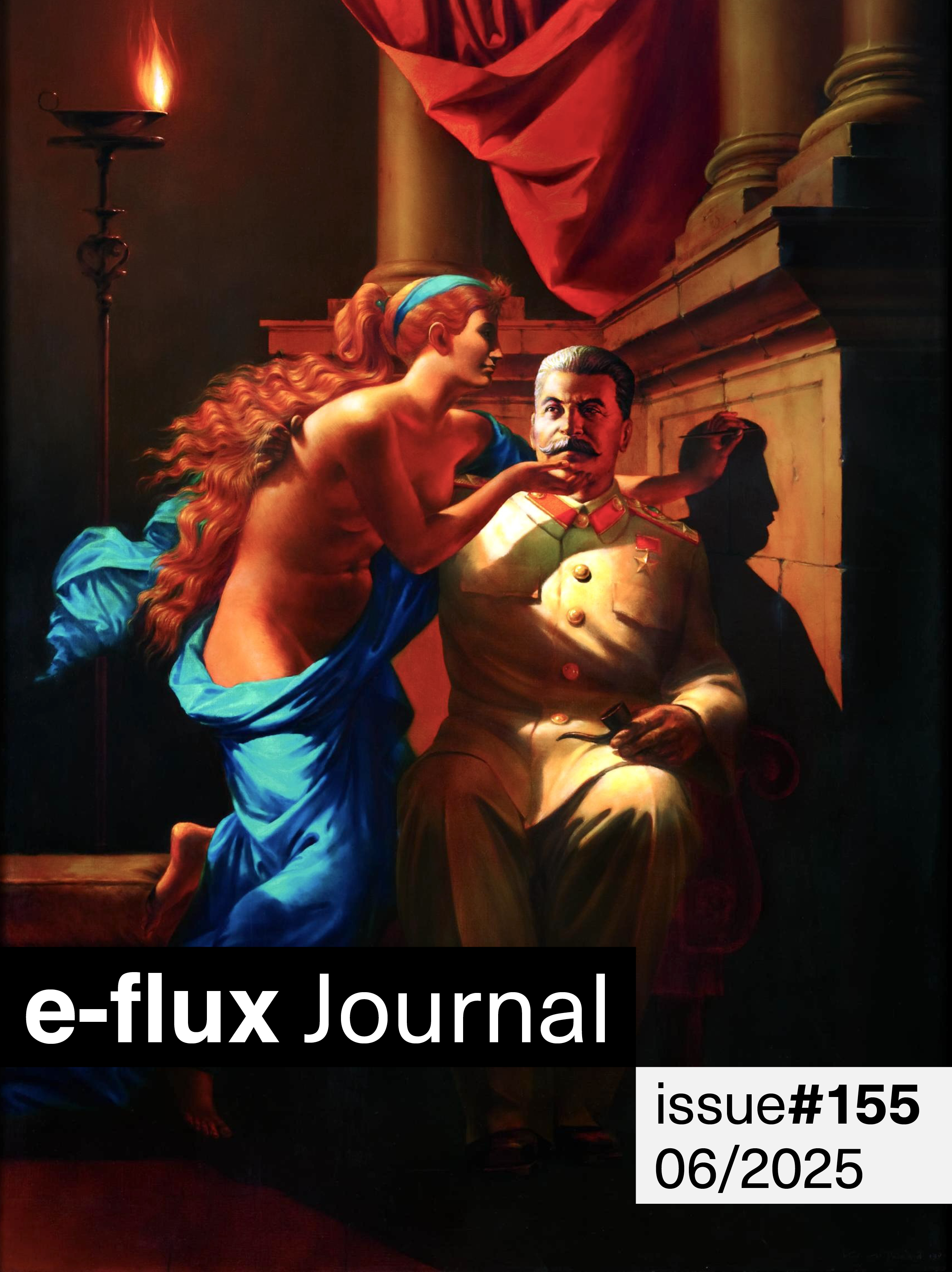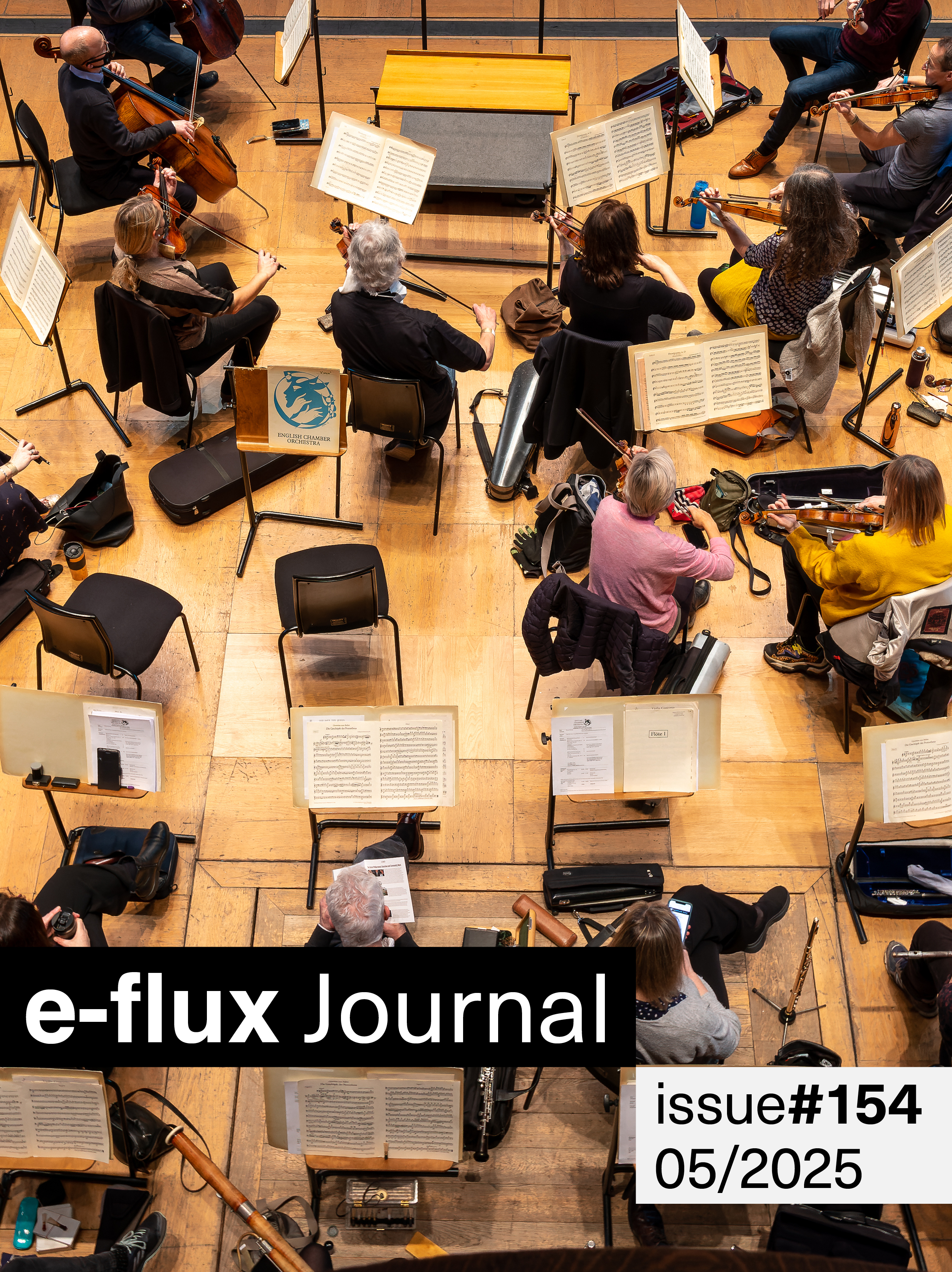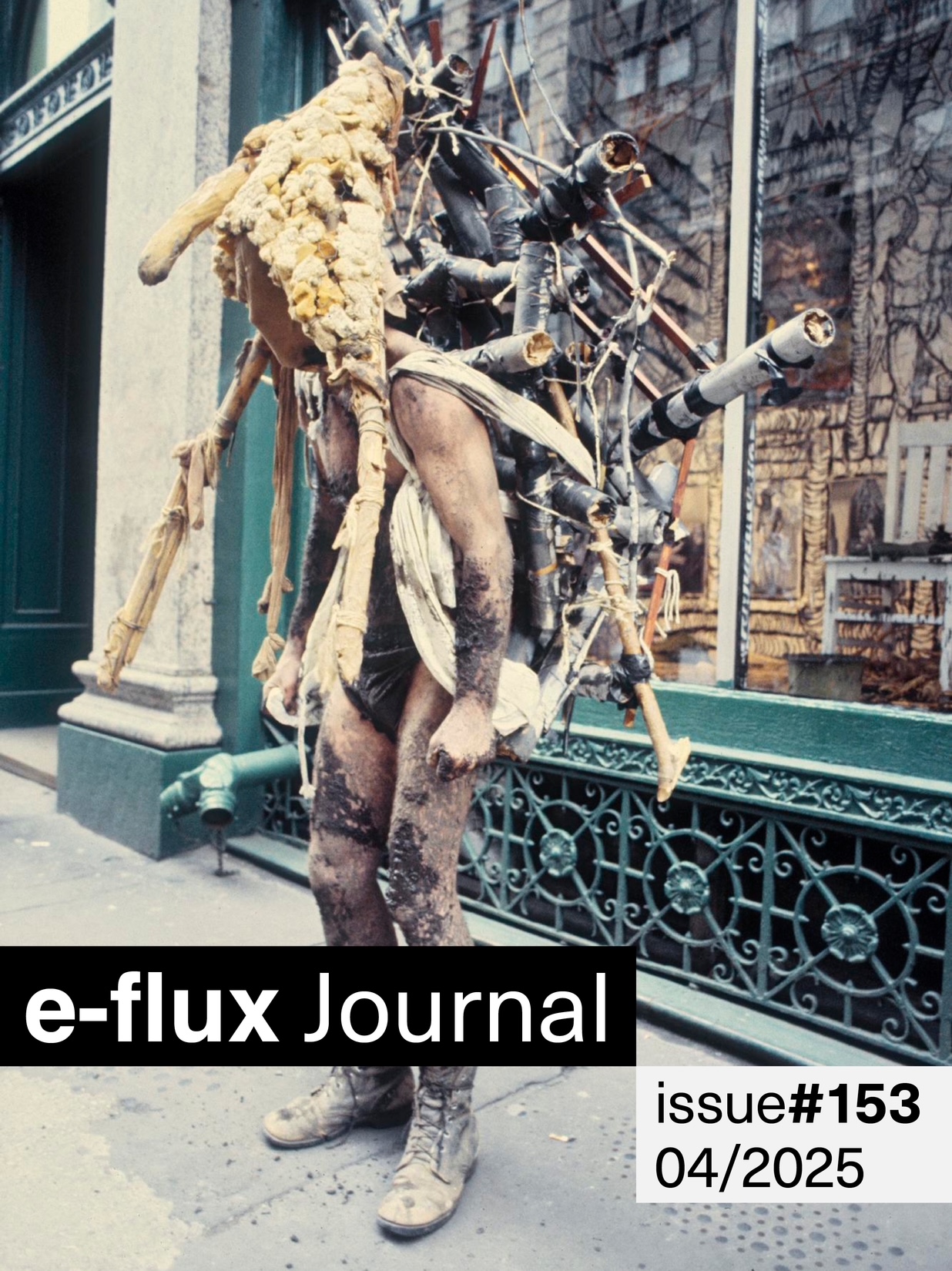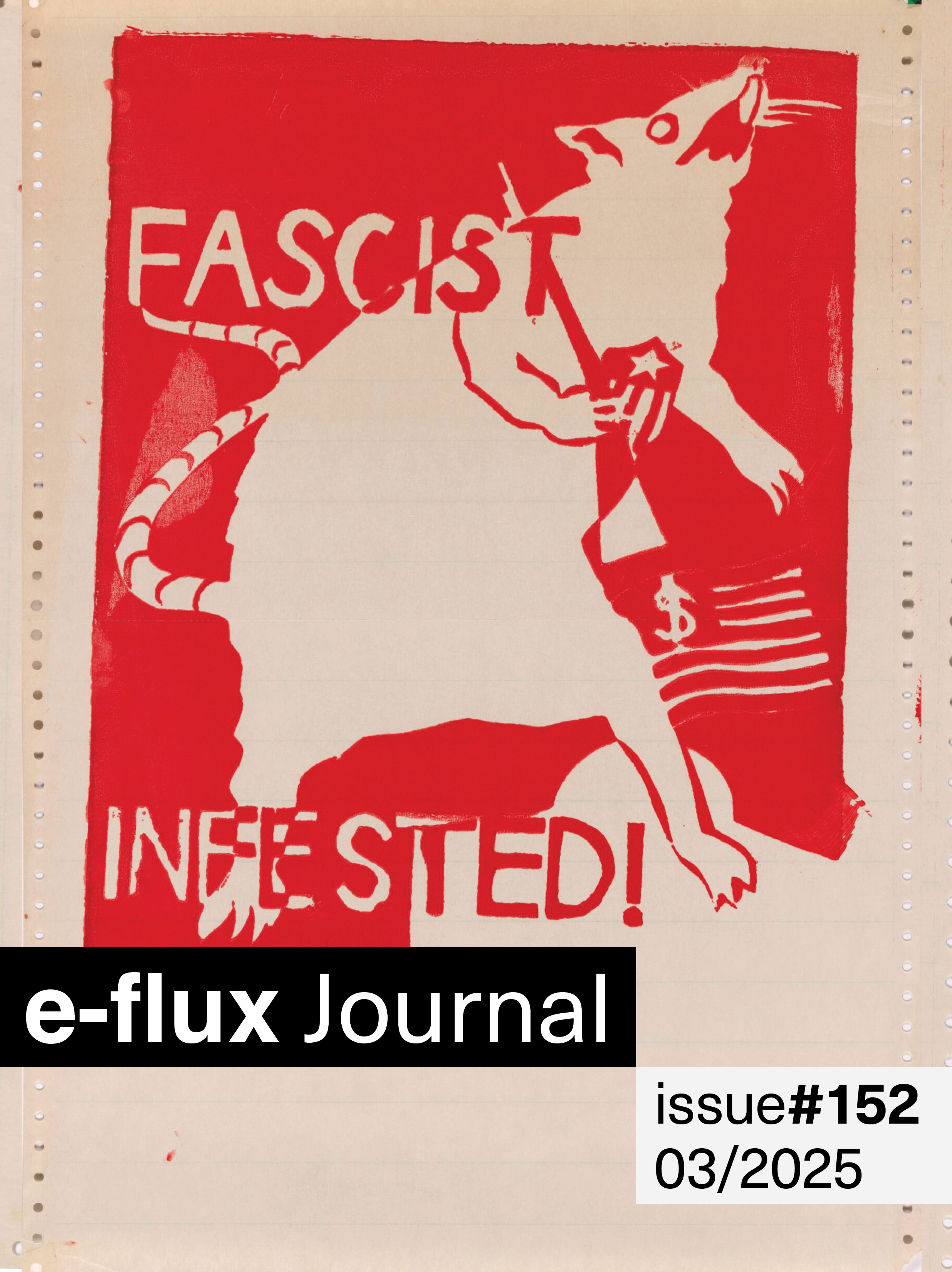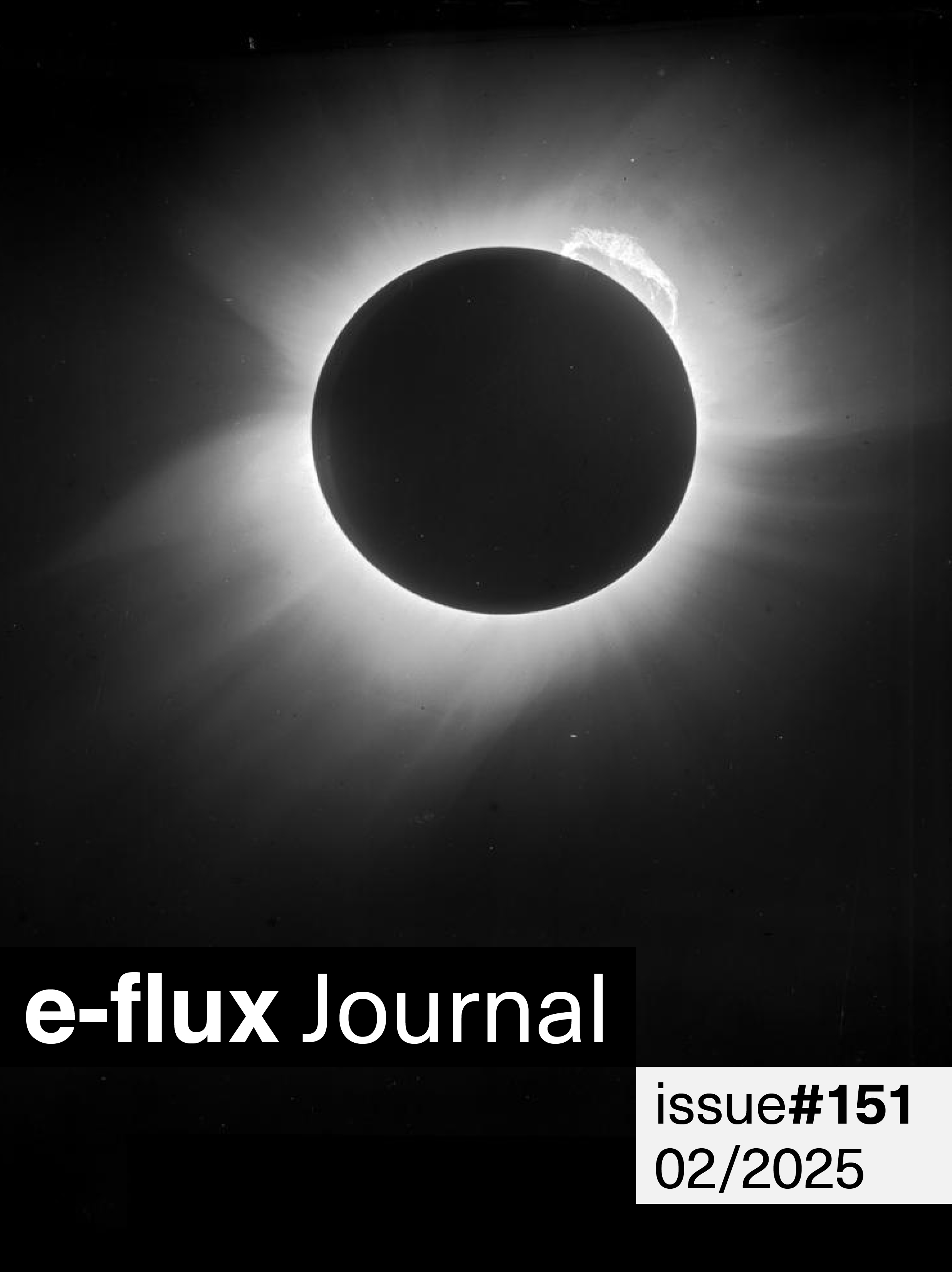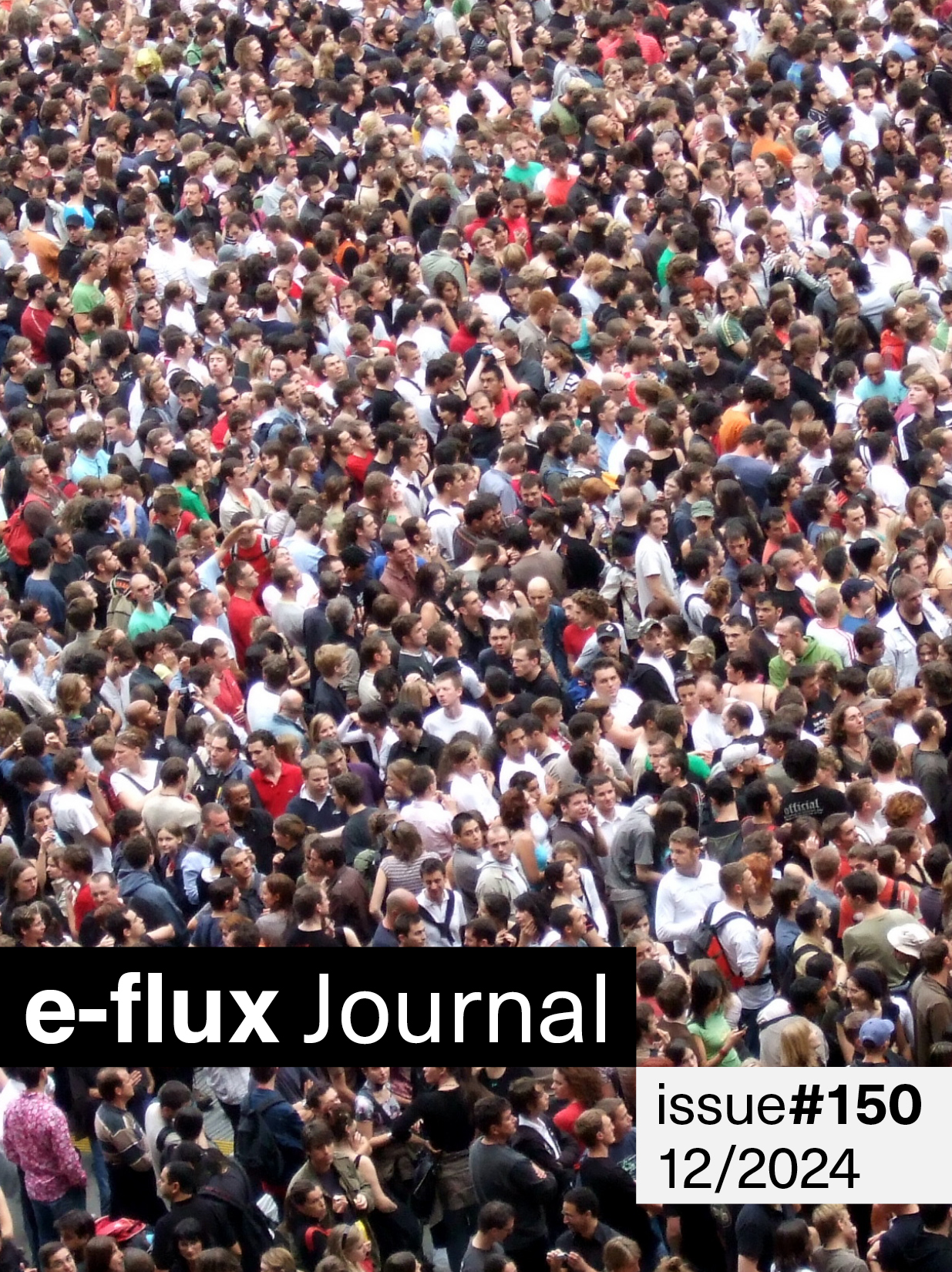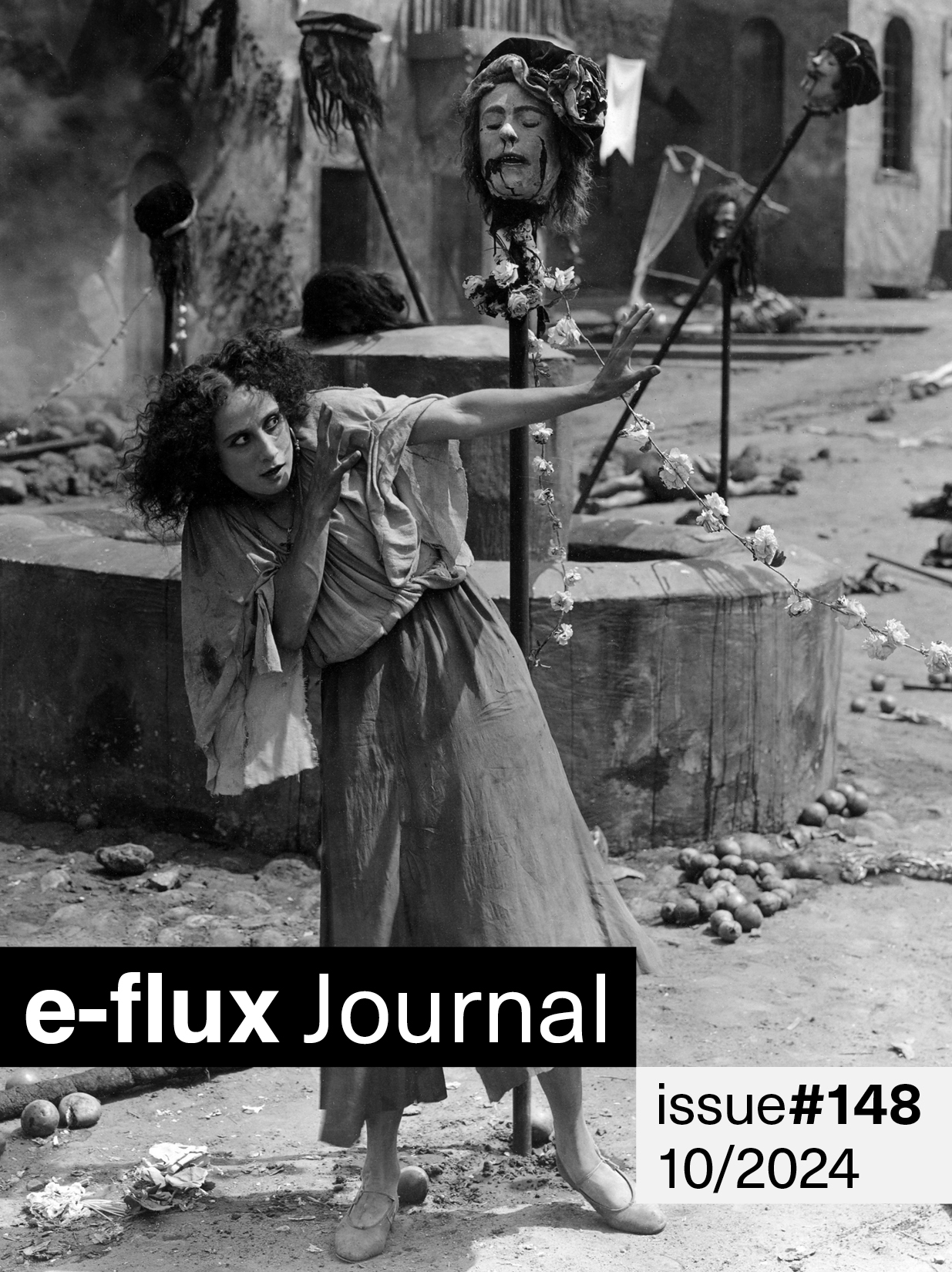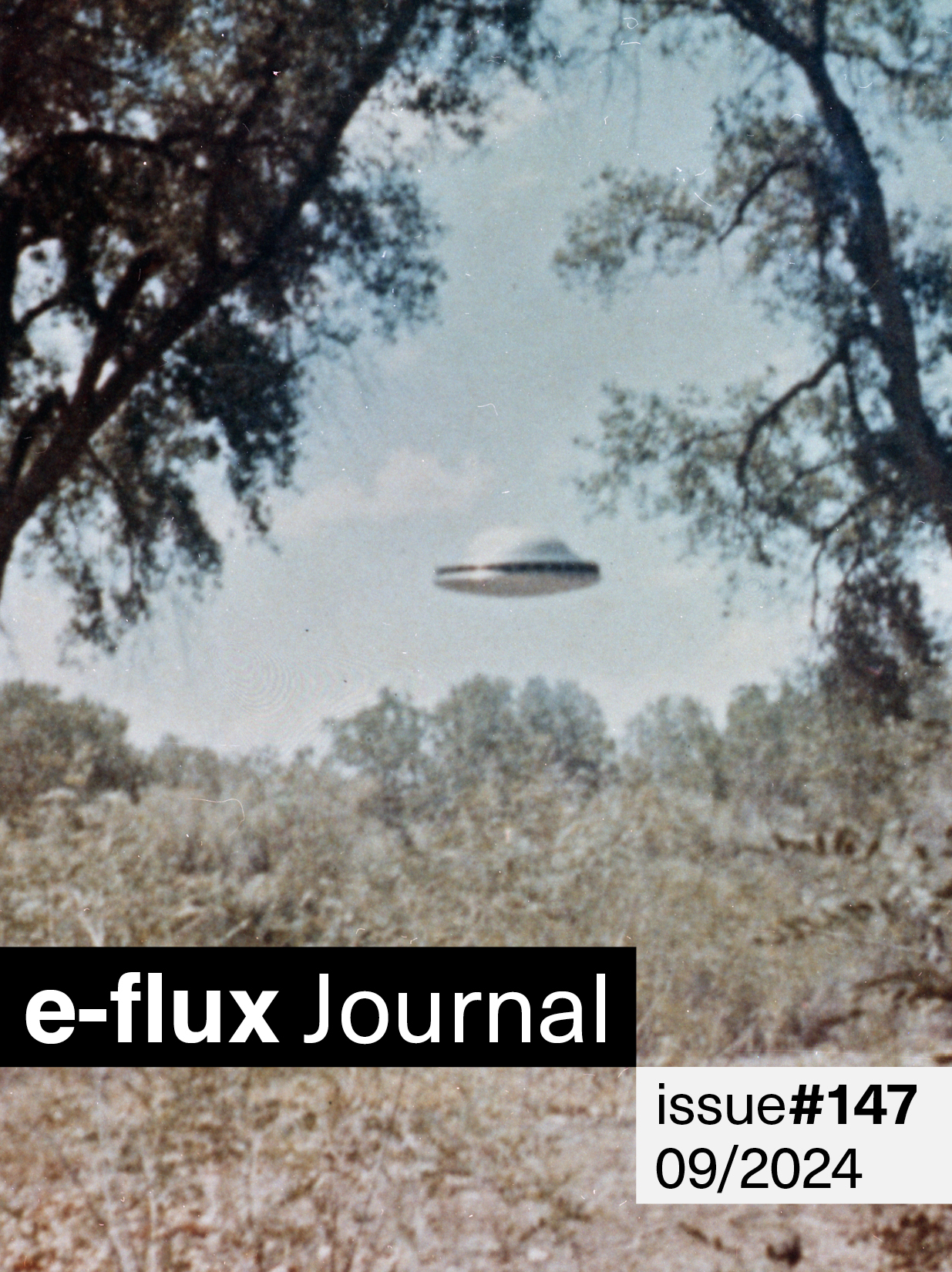e-flux journal issue 109: “Navigation Beyond Vision, Issue Two”
guest-edited by Tom Holert and Doreen Mende
with Kodwo Eshun, Mariana Silva, Maïté Chénière, Ramon Amaro and Murad Khan, Doreen Mende, Brian Kuan Wood, and Laura Lo Presti
Reminder: the application deadline for the e-flux journal fellowship is tomorrow, May 15. Please find details here.
Our editorial for the first issue of “Navigation Beyond Vision” in June 2019 began: “Today one may complain that life has been reduced to points in a matrix of relations—cities, territories, and historical narratives prematurely refined into categories of known and unknown, real and virtual, concrete and abstract space.” At the time, we could not have imagined the mass migration into abstract space that would soon follow. Today, living through the planetary pandemic, the imperative to navigate the world and our own lives through computational tools has been radicalized to the extreme. The last months of Skyping, Zoom conferencing, and collaborative Google Docs writing make us feel we have no choice but to exhaust the planetary promise of navigational tools, refining remoteness into proximities, scaling the world of friends, colleagues, and family into the rectangular screens in front of our eyes. More than ever, a paradigm of navigation folds all social and economic activities into the domestic, the facial, the optical, demanding further reflection on the enmeshment of labor, exhaustion, and love into a techno-political website.
“Social distancing” in this context seems a double euphemism: First, for the constant interruption of face-to-face conversations by glitches, echoes, ventilation hum, or simply by headaches and sore eyes. And second, in echoing filmmaker and writer Harun Farocki’s “computer animation rules”—using model worlds to rehearse actions in the world—social distancing becomes less of a social exercise than a technological mandate. Galleries and art institutions who still continue the high-modernist tradition may secretly rejoice when uploading exhibitions and programming to not only more cost-effective virtual platforms, but also into online spaces sanitized beyond the wildest dreams of any white cube. If before they struggled to sterilize spaces into bright white voids of absolute hypothesis and contemplation, an entire planet has now emerged from hiding, even more virtual and ripe for habitation, and with lighting already built into the screen.
Our impulse to engage with navigation departs, in the first place, from Harun Farocki: in the 1990s, he developed the concept of “distance montage” (introduced by the filmmaker Artavazd Peleshyan) into the “soft montage,” where continuities between images are folded into one another. To Farocki, this conceptual-practical shift could acknowledge a “farewell to cinema” (Chris Marker) and the arrival of video games, video art, and video installation. Drawing on media theorist Alexander Galloway’s term “actionable objects,” Farocki embarked on understanding the actionability of a “ruling class of images” that produce the world through a performative relation (rather than simply reproducing a virtual world that is “highly artificial with millions of details”).
In early April 2019, the Harun Farocki Institut (HaFI) and e-flux embarked on this research path with “Navigation Beyond Vision,” a conference at the Haus der Kulturen der Welt (HKW) in Berlin. Following this conference, we conclude that the principle of montage is not obsolete as a methodology and epistemology of the political image. While computational navigation continuously refreshes the image to sustain its infinite and exploitative tyranny of immersion, the principle of cinematic montage should stand as part of a continuous debate on how navigation alters the way images—and art—constitute models of political action and modes of political intervention. The seven contributions for this second issue of “Navigation Beyond Vision” aim to complicate and expand upon navigation’s planetary technological promise.
In 1967–68, Farocki and his fellow students at the German Film and Television Academy Berlin (dffb) occupied their film school, renaming it “Dsiga Wertow Akademie.” What would be an equivalent educational-political action for filmmaking students today? Perhaps they should follow the pedagogy of Neytiri te Tskaha Mo’at’ite of the Na’vi tribe of Avatar (2009), who teaches “the ways of the people” to travelers lost between distant bodies and distant worlds. The “Na’vi Academy” could become this student occupation of our screens. We still have 116 years to develop this further: the daughter of the Na’vi people was only born in 2136.
—Tom Holert, Doreen Mende, and the Editors
Kodwo Eshun—Recursion, Interrupted
The question of navigation, which forms the raison d’etre for this conference, is popularly understood as a quotidian practice of movement within computational networks. As a gestural economy compelled by digital interfaces, the habitual activity of navigation tends to recede from critical scrutiny. To begin to comprehend navigation’s historical ontology, phenomenal interfaciality, political imagination, and psychic life requires an effort of defamiliarization that begins by paying attention to this critical inattention.
Mariana Silva—Mining the Deep Sea
In the West, exploration of the deep sea has historically conjured images of ancient monstrous mythological creatures such as the Leviathan, the Kraken, and more recently the Cthulhu, among other figures of alterity and the unknown. Characterized by scientists and mainstream media alike for being “utterly alien,” newly discovered undersea life forms are no longer gigantic, but microbial. Descriptions often mix in themes of outer space exploration in the evocation of the “alien” and the technical challenges of building robotics to withstand extreme underwater pressure conditions. Perhaps the recent reconception of evolutionary trees prompted by underwater hydrothermal vents, over a century after the initial Western exploration of the Galápagos, contributes to a particular form of modern mythology—a science-led search for a last common ancestor of sorts fueled by biogenetic labs.
Maïté Chénière—Sonic S.cape
A proposal for a sonic navigation—as a DJ practice—manipulating sound as much as the space and time inhabited by the * c r o w d *
A map disrupting the clock, where events are simultaneously happening
A space moving away, submerged by marooning streams of music
Porous bodies, telling stories,
Leading their altered trajectories within the Drexciyan Queerdom
Ramon Amaro and Murad Khan—Towards Black Individuation and a Calculus of Variations
What if we sought to comprehend this new horizon as a grasping of Black individuation from within the cultural weight of colonialism, where one finds the measure of their validity in the problems we confront? What if the individual in relation to whiteness was not given as a fact preexisting the operation of being and becoming Black? What if the image of Blackness, and thereby the Black individual produced by colonialism, was merely one element of individuation constituting a false assumption of the exhaustion of Black existence? Finally, what if Black existence was grasped not as a final outcome in recourse of the presumption of racial logics, but as a process of individuation that reformulates the categories of knowledge, thereby shifting ontological assumption from one that exists in relation to whiteness to one who’s principle of genesis becomes internally generated and invented from within?
Doreen Mende—The Code of Touch: Navigating Beyond Control, or, Towards Scalability and Sociability
What could a practice of politicizing the image in the twenty-first century look like, considering that navigation—the computational condition of contemporary image-processing—updates, calculates, and incorporates the frame excessively and continuously into the image-making process? In order to render more palpable the beginning of a political ontology of image navigation by means of computation, we should remind ourselves of the principle of twentieth-century montage, which can offer a potent point of departure. Much has been written and produced in the name of montage. In 1967–68, film students, including Harun Farocki, announced the Dsiga Wertow Akademie, an occupation of their film school, the German Film and Television Academy in Berlin, an act that paid tribute to montage as a cine-political practice. Montage was pioneered by Esfir (Esther) Schub and Dziga Vertov, emerging from the world of Soviet cinema during the period of the Bolshevik Revolution of 1918. In other words, montage’s potency to mobilize the image for emancipatory processes was initially built from participation in communist world revolution.
Brian Kuan Wood—Insurgency of Life
What is life in a world where I am also the architecture of that world? Until recently, the history of Western scientific development has been a history of a brutal spiritualism, where discoveries of cosmic mechanics only further displace the human observer. I might gain access to God’s computer in a quest to commune with higher forces, only to progressively discover that material forces are programmed as an inhospitable abyss in which my life means nothing. Science might come to the rescue to draw these material forces back under human command, weaponizing and industrializing their power to limit their threat. From Descartes conceding that we possess an exceptional soul in spite of being animate machines and Darwin’s allowing us an aristocratic status in spite of being animals, a brutal self-extinction has haunted (perhaps even guided) the European spiritual imaginary since the Enlightenment. We might eventually consider that mechanical forces and animal survival might have better things to do than conspire to exterminate our human kingdom the moment we observe them. In the meantime, we still need to contend with a world or worlds that serve our every need in the absolute, even amplifying them into architecture, sealing us in and serving us at the same time.
Laura Lo Presti—Like a Map Over Troubled Water: (Un)mapping the Mediterranean Sea’s Terraqueous Necropolitics
By keeping track of something that is no longer there, or that never was, maps constitute a contemplative experience of death. In visualizing migrant fatalities as a numerical hemorrhage, they also develop a distinct aesthetic of necropolitics. Such maps, in fact, make viewers understand that immobility and death produce their own movement and geography, since time takes its material toll by corroding and eroding the texture from which maps of death are made, transforming them into mutable and perishable organisms. Visually, immobility affects the architecture of the map as well, in the sense that the viral lines of the maps appearing in the news, usually depicting the alleged invasion of foreign people, now transform into points—death points as opposed to fluxes of life. This corroded, numerical, and dotted choreography uncovers an inhuman, unjust, but nonetheless real geography of necropower that would otherwise remain buried under the seabed.
